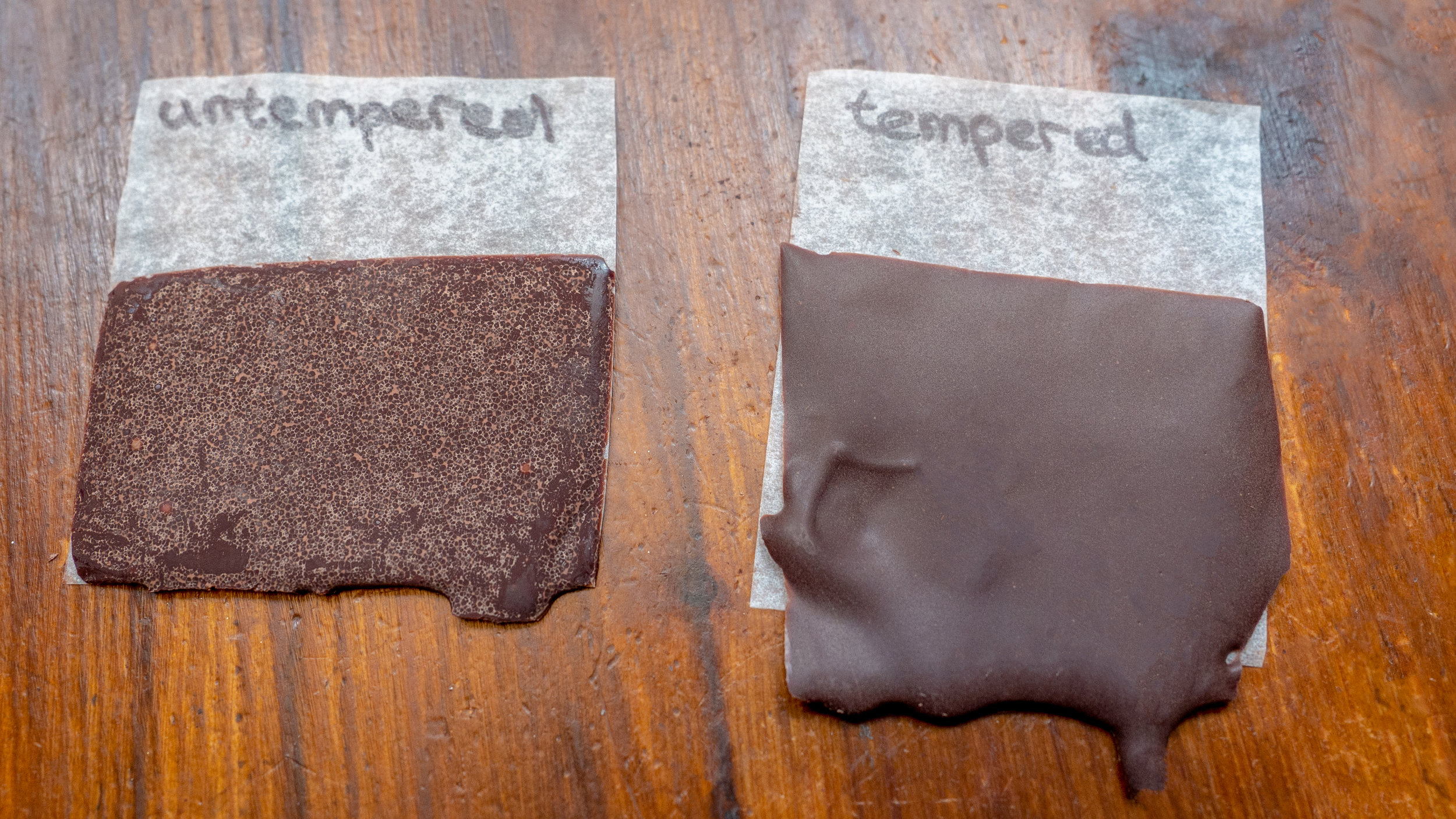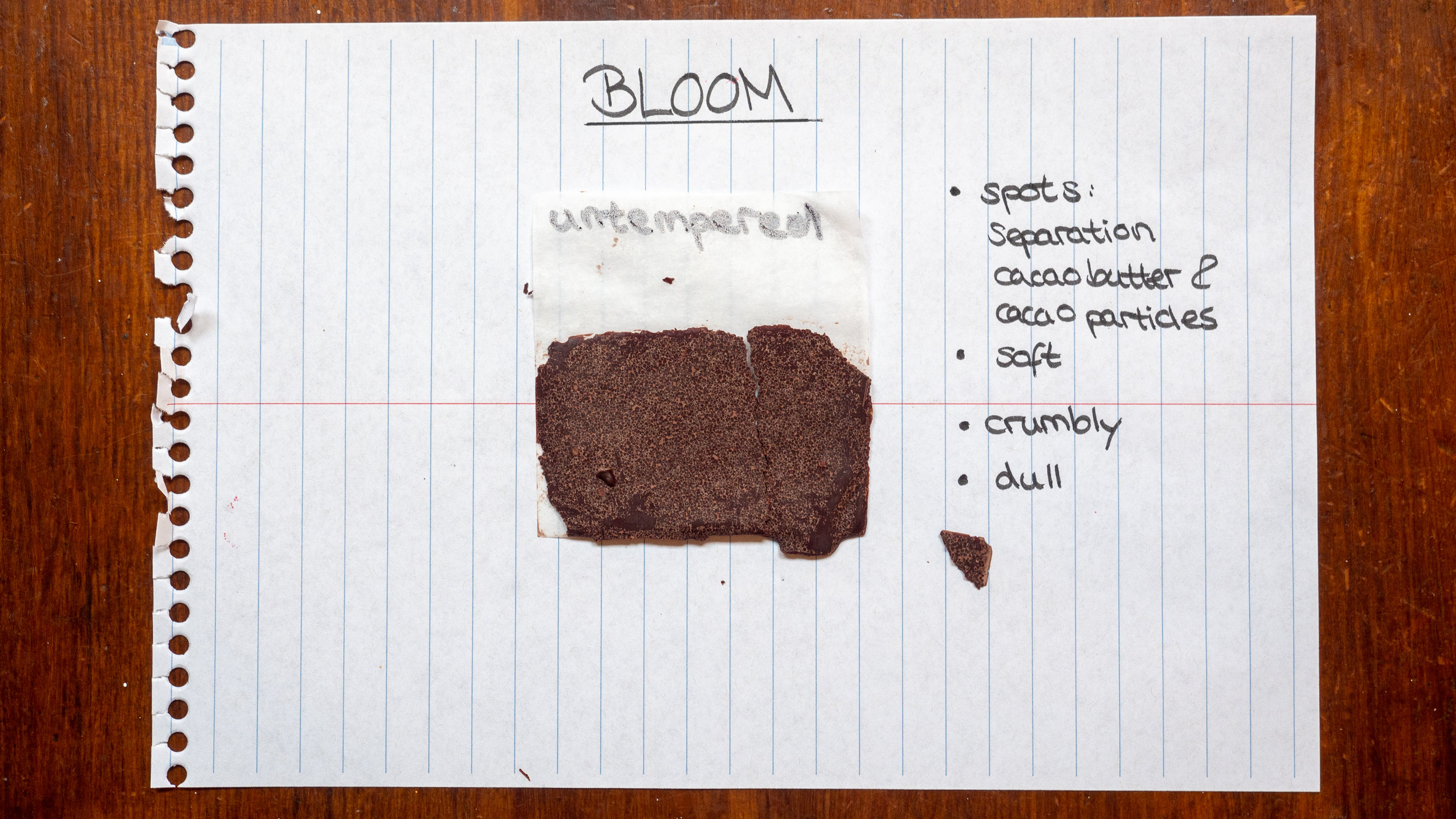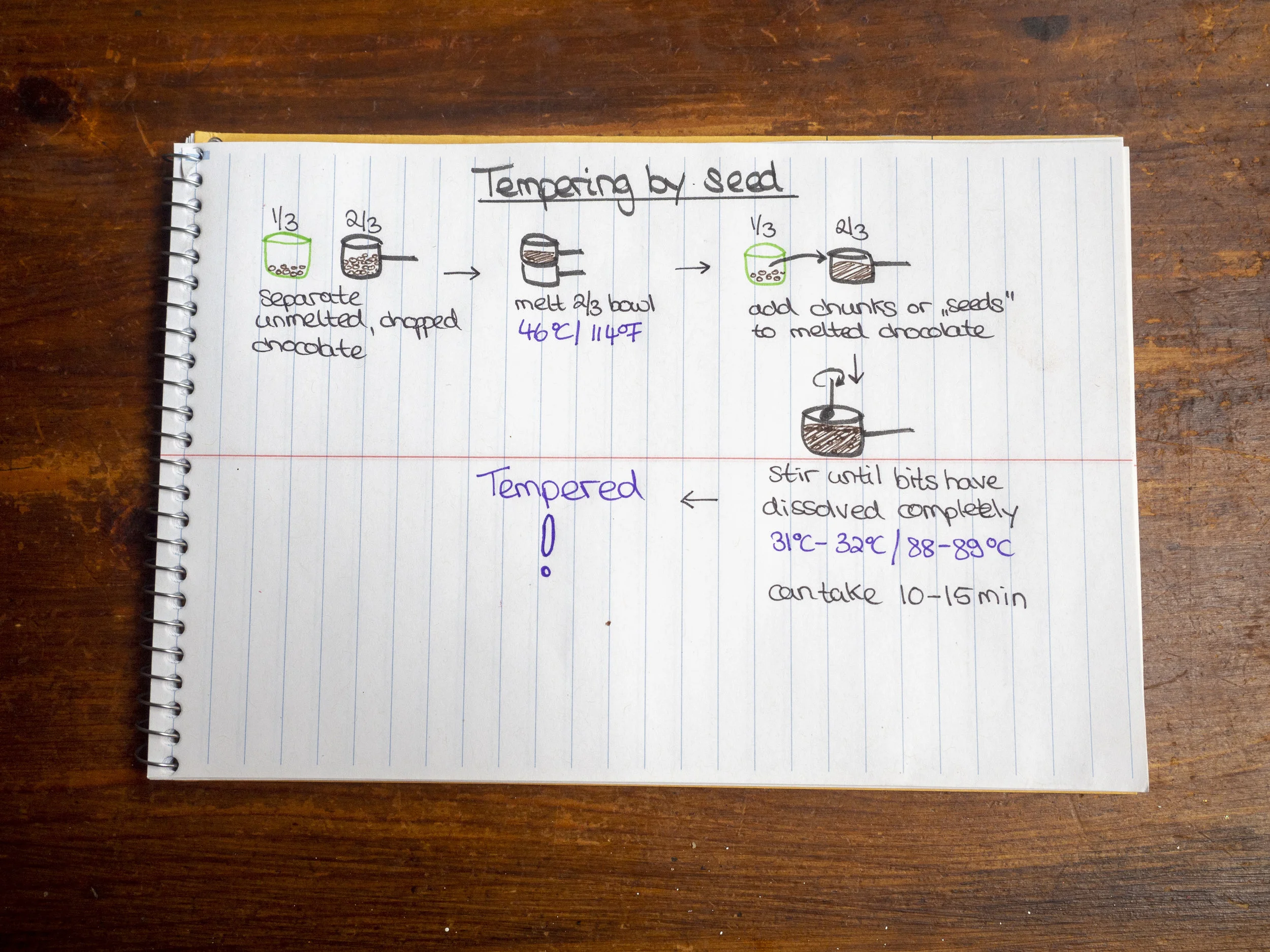How to make chocolate at home - Part 4 Tempering
Tempering chocolate is an essential step for making smooth and glossy chocolate and chocolate coatings. When we don’t temper chocolate it becomes grayish and dull. This happens because the cacao fat is separating from the cacao particles. Tempered chocolate produces a crisp, satisfying snap when you bite into it or brake it. The tempering process takes chocolate through a temperature curve, a process which aligns the chocolate’s crystals to make it smooth, silky, and glossy.
I want to share two different methods of tempering chocolate with you.
Tempering by hand (in case you don’t have any tempered chocolate)
Tempering by seed (in case you have already tempered chocolate)
Also check out the video on below:
The temperatures I’m providing below are only valid for tempering dark chocolate. White and milk chocolate have different temperature curves (see tempering by seed).
Tempering by hand
Because we started making chocolate from scratch, we don’t have any tempered chocolate yet, which is need when you temper by seed. This method can be a little bit messy, but it’s really fun to do it!
What you need to temper by hand:
stove or microwave to melt chocolate
pot if you use a stove
2 bowls
thermometer
untempered chocolate
parchment paper
scraper
spatula
knife
molds if you want to bring your tempered chocolate into a special shape
kitchen counter top / granite or marble slab
How you temper dark chocolate by hand:
Melt your chocolate until it reaches 46°C / 114 °F. Watch out, don’t burn your chocolate or get water into it, otherwise it’ll seize and you can’t temper it anymore (it will still taste yummy but the texture will be all wrong).
Separate your chocolate mass:
1/3 is remaining in a bowl, temperature needs to be stable at around 46°C / 114°F
transfer the other 2/3 onto your kitchen slab
Move your chocolate on your slab from the edges to the center to cool it down until you have reached 28 - 29°C / 82 - 84°F.
Scrap your chocolate from the slab into the bowl with the remaining chocolate.
Stir with a spatula until you have reached 31 - 32 °C / 88 - 89°F. Depending on the amount of chocolate you’re tempering and the temperature in your kitchen, it’ll take 10 - 15 minutes.
Once you have reached the desired temperature, make a temper test. Dip a knife into your tempered chocolate and let it cool down for 1 - 2 minutes in your refrigerator. If it sets quickly, is glossy and has a clear snap your chocolate is tempered and can be used as a coating or you can bring it into any shape you want with molds.
2. Tempering by seed
If you buy chocolate from the store it’s already tempered. And in case you want to buy chocolate and coat strawberries or decorate your chocolates, this is the easiest way to temper.
What you need to temper by seed:
stove or microwave to melt chocolate
pot if you use a stove
2 bowls
thermometer
untempered chocolate and tempered chocolate
parchment paper
spatula
knife
molds if you want to bring your tempered chocolate into a special shape
How you temper dark chocolate by seed:
Chop chocolate into small pieces.
Set 1/3 of the chocolate aside.
Example 1lb of chocolate
set 0.33 lb of chocolate aside
melt 0.66 lb chocolateMelt the remaining 2/3 chopped chocolate until it reaches 46°C / 114°F in
a double boiler, microwave (low power 4-5 minutes) or in a metal bowl
over hot water.Add handfuls of chocolate you set aside in step 2 to your melted
chocolate. Stir continuously until you reached 31 - 32 °C / 88 - 89°F. This can take 10 minutes, depending on the temperature of your environment and the amount of chocolate you’re tempering. Your chocolate should now be tempered.Make sure you keep the chocolate in temper, which means around 31 - 32°C / 88 - 89°F by either heating it up in the microwave for a couple of seconds or over a hot water bath.
White or milk chocolate have different temperature ranges, because the fat content is different. Feel free to experiment with white, milk or dark chocolate at home:
Temperature melting
Dark chocolate: 46 – 48°C / 114 – 118°F
Milk chocolate: 40 – 45°C / 105 – 113°F
White chocolate: 37 – 43°C / 100 – 110°F
Temperature seeding
Dark chocolate: 31°C / 88 – 89°F
Milk and white chocolates: 29 – 30°C / 84 – 86°F
Tempering chocolate can be frustrating if you don’t have a good thermometer, or your kitchen is too hot and humid. Keeping the temperature under control is really essential. The ideal room temperature to temper chocolate is below 20 - 22°C / 68 - 70°F with a relative humidity below 50%.



